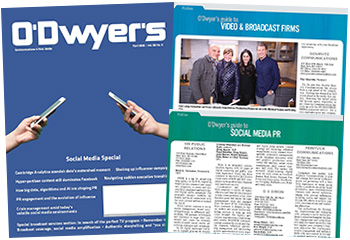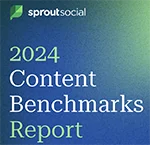 Andrea Pass |
Every public relations campaign has its end goal, messaging and strategy to achieve client results. Today, an integrated message communicated via broadcast and social media platforms ties together unified brand outreach to increase sales, grow positive reputation management and engagement over multiple channels.
Via mobile touchpoints, the domino effect is vital for a successful program. Traditional press and social media amplification need to work together using quality placements, content and links.
Consumers are still watching broadcast and cable television at a rate of over five hours per day, or just less than 35 hours per week, according to Nielsen data. Time spent watching online video content continues to increase with audiences spending an estimated two hours per week. Younger viewers watch almost one-and-a-half hours of video content per week via smartphones. Therefore, PR pros need to blend a method of traditional and new media to effectively integrate campaigns.
|
|
Broadcast media adds to social content
Broadcast media offers opportunities for brands to showcase news in an editorial context. By securing interviews on local, national and online video outlets, pre-interview outreach and post-interview video posting shows an ongoing and up-to-date awareness for the business or product.
Booking clients on morning shows reaches a targeted audience of those getting ready for working, preparing the children for school and retirees, for example. The national broadcasts as well as their local counterparts have dedicated viewership that oftentimes does not waiver. In New York, if “Good Day New York” on the Fox affiliate is the favorite, that consumer will not flip to “PIX 11 Morning News” on the CW affiliate. One media outlet will not book a guest secured by the competitor. Think through and carefully plan segment bookings to be sure to best service client and media needs.
Use social media to effectively promote upcoming appearances prior to airing. Then, secure the segment link and highlight on all client and appropriate social media channels to fully integrate the broadcast placement while increasing SEO. By tagging the media outlet, host, booker and others, increased awareness can occur.
Keep the integrated message consistent throughout client interviews and social media content.
Online video outlets boost engagement
In keeping up with online broadcast media growth, Cheddar is a live post-cable network — basically CNBC for Millennials. Broadcasting from the floor of the New York Stock Exchange, this media outlet combines live video content with a social media outreach. Only two years old, Cheddar TV understands the value in expanding audiences via multiple channels including Amazon, Vimeo, Twitter, Sling, Xfinity, Pluto TV, RachMe TV and 60 percent of smart TVs in the U.S.
For hyper-local video segments, be sure to research individual states to secure placements in online broadcast outlets. Again, the integration of segment content plus social media placement will continue to grow client recognition.
Reposting of interviews and content, even months later, will result in an increased bump in engagement, especially when placements are evergreen.
Online video plays well to integration
PR firms should be producing video content as an integral part of the overall strategic plan. With the consistently expanding opportunities for online video placement, marketers integrating Facebook live and YouTube are continuing to see growth.
Clients should place video content on a variety of platforms to increase potential eyeballs. Create content that can be viewed with or without sound since many will view without turning on the audio. Several sources have noted that approximately 85 percent of video is absorbed without sound.
The trend of live streaming allows clients to bring the “on air” experience to consumers following that business or brand. From entrepreneurial ventures to Fortune 500 companies, each can create and disseminate content to engage with key audiences. All it takes is a smartphone, tripod and social media account.
Support traditional PR with social media
Last year, 81 percent of those in the U.S. had a social media profile, meaning that 19 percent of Americans were not on social media. These are still valuable consumers to a brand. Therefore, be sure to tie-in both traditional print, broadcast and online press outreach with social media content and integrate two for more complete coverage.
Tie together broadcast public relations with social media amplification to keep that integrated message alive.
***
Andrea Pass is Vice President, Media Relations, for bi-coastal agency Marketing Maven. She can be reached at [email protected].



 What if companies could harness the fury of online outrage into a force for good? This is precisely where companies can start turning the trolls into brand champions.
What if companies could harness the fury of online outrage into a force for good? This is precisely where companies can start turning the trolls into brand champions. Audiences interacted with brand content far more often on Facebook and Instagram in 2023 than they did via X (formerly Twitter), according to a report that tracked engagement trends across different social networks.
Audiences interacted with brand content far more often on Facebook and Instagram in 2023 than they did via X (formerly Twitter), according to a report that tracked engagement trends across different social networks. Can public relations help counteract the dissension fostered by the power of digital platforms to spread hate, fear and confusion?
Can public relations help counteract the dissension fostered by the power of digital platforms to spread hate, fear and confusion? The number of Americans who get their news from TikTok has quadrupled in the last three years, according to a recent Pew Research Center report.
The number of Americans who get their news from TikTok has quadrupled in the last three years, according to a recent Pew Research Center report.


 Have a comment? Send it to
Have a comment? Send it to 
No comments have been submitted for this story yet.